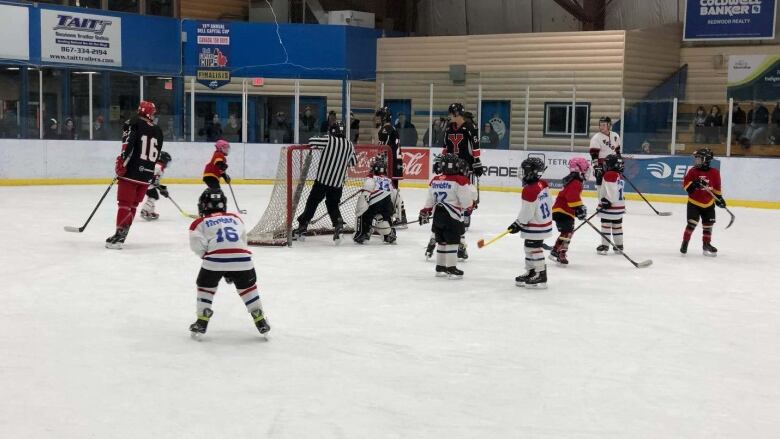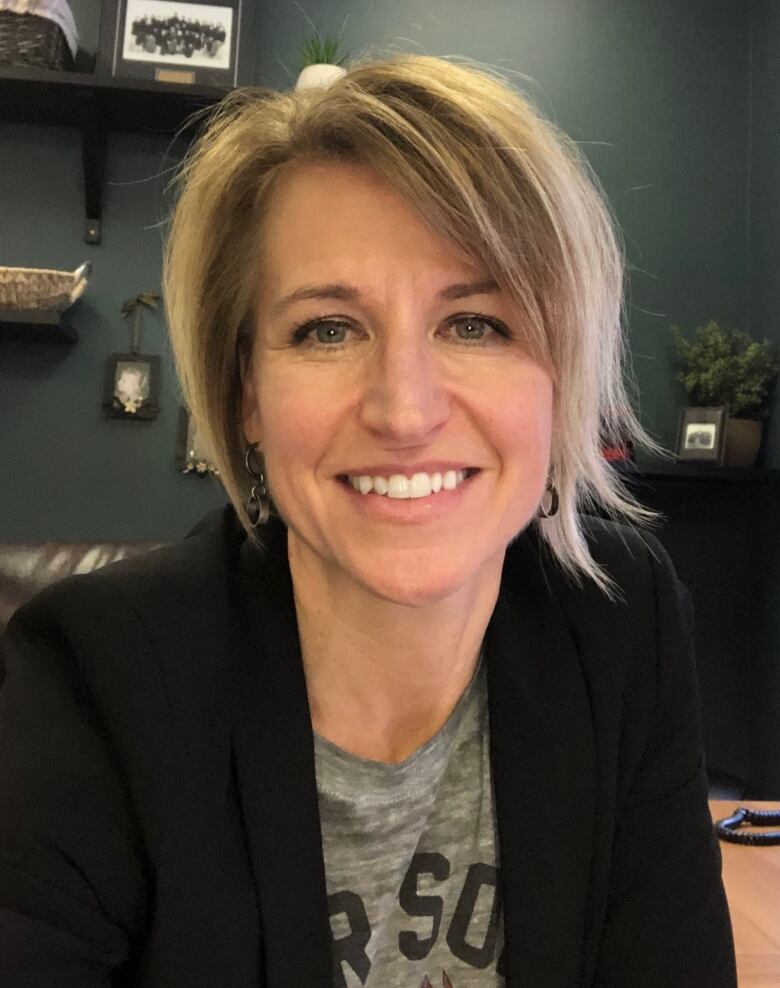Game on! Yukon sports groups prepare to play, with new COVID-19 guidelines
Territory has issued guidelines for sports such as hockey, volleyball and soccer

Tracey Bilsky, executive director of Sport Yukon, says even up to this week it wasn't clear what the fall and winter would look like for amateur athletes involved in somesports in Yukon.
"There was all sorts of uncertainty," she said.
Now, teams and organization have some clearguidelines for how to safely get players back on the ice,court or field. The guidelines were released on Wednesday by territorial health officials.
Bilskysaid it's a relief to now have something to work with.
"We're really excited to see that they're formalized, that they're final, and now the sport organizations in the Yukon can take these guidelines and use them to start planning their winter season," she said.
The guidelines describe how sports where a playermay come in contact with someone or where physical distancing isn't always possible such ashockey, soccer, volleyball and basketball should be safely organized and run in the midst of the COVID-19pandemic. It spells out how players, coaches, parents and facility managers can minimize the risk of spreading the coronavirus.

Individual sports organizations are encouraged to adapt national guidelines specific to their sport. For example, hockey leagues are encouraged to adapt Hockey Canada's return-to-play safety guidelines.
"We're very happy with what the chief medical officercame up with," said Robert Green, president of Hockey Yukon. His organization represents the territory's various hockey leagues.
"They've given us all quite a bit of leniency ... How we're looking at it for all the kids is, they're able to get back on the ice in a team aspect, as well as games being able to be played."
'Mini-leagues' and change rooms
The guidelines spell out how players can form "mini-leagues" of up to 60 people, and hold games and tournaments within that cohort.People can participate in up to twosports mini-leagues at any one time, and should keep a recordof participants in each league.
The guidelines say players should still maintain physical distancing where possible, including eliminating team huddles and post-game handshakes.
Sporting facilities such as arenas and gyms will also develop their own operational plans, to deal with things such as change room use.
Green said the goal for hockey players will be to minimize the need for using change rooms. That would mean kids arrive at the arena already in their gear.

"So they're ready to go with a coach, either just tying their skates or just take skate guards off," he said.
Green acknowledges that hockey will be very differentthis year. For example, younger players typically get a lot of help on the ice from coaches and volunteers but maybe not this year, if there's a cap on the number of people who can be on the ice.
Still, he's pleased that kids will be lacing up at all this winter.
"When everything got shut down at the beginning, yeah, we know everybody sat back and went, 'What's happening for the fall? Are we going to have kids back on the ice?'" Green said.
"This just really is a huge positive in the direction that we want to travel."
Ken Watson, a coachwith the Whitehorse Minor Hockey Association, agrees.
"I think it's great. Yeah. And we'll just take it day-by-day, or week-by-week or whatever. But the kids get the opportunity to get back inorganized sports and get out and play the sport that they like to play," he said.
"I think it's great."
'Still a lot of questions'
However, Bilsky says even with the guidelines, there's still a lot of work to do before play resumes on the ice, court or field.
"There are a lot of changes, and it will take some creative minds to deal with these adaptations," she said.
"There's still a lot of questions about insurance right now. There's sort of blanket policies that state that they won't cover anything, any liability to do with COVID[-19]. So those things need to be ironed out."
Some athletes will also need to adapt to changes in the rules for their sport. For example, Bilskysays in volleyball, players won't be able to block at the net.
"That changes the game significantly. So it will be different for people who trained in that sport and play that sport."
Nevertheless, she says it's a great start to have the guidelines in hand. She hopes it gives a "new spark" to coaches and volunteers who put so much work into their organizations.
"[They'll]be able to now surge ahead without as many question marks as therewere before."
Written by Paul Tukker, with files from Mike Rudyk and Claudiane Samson












_(720p).jpg)


 OFFICIAL HD MUSIC VIDEO.jpg)
.jpg)



























































































